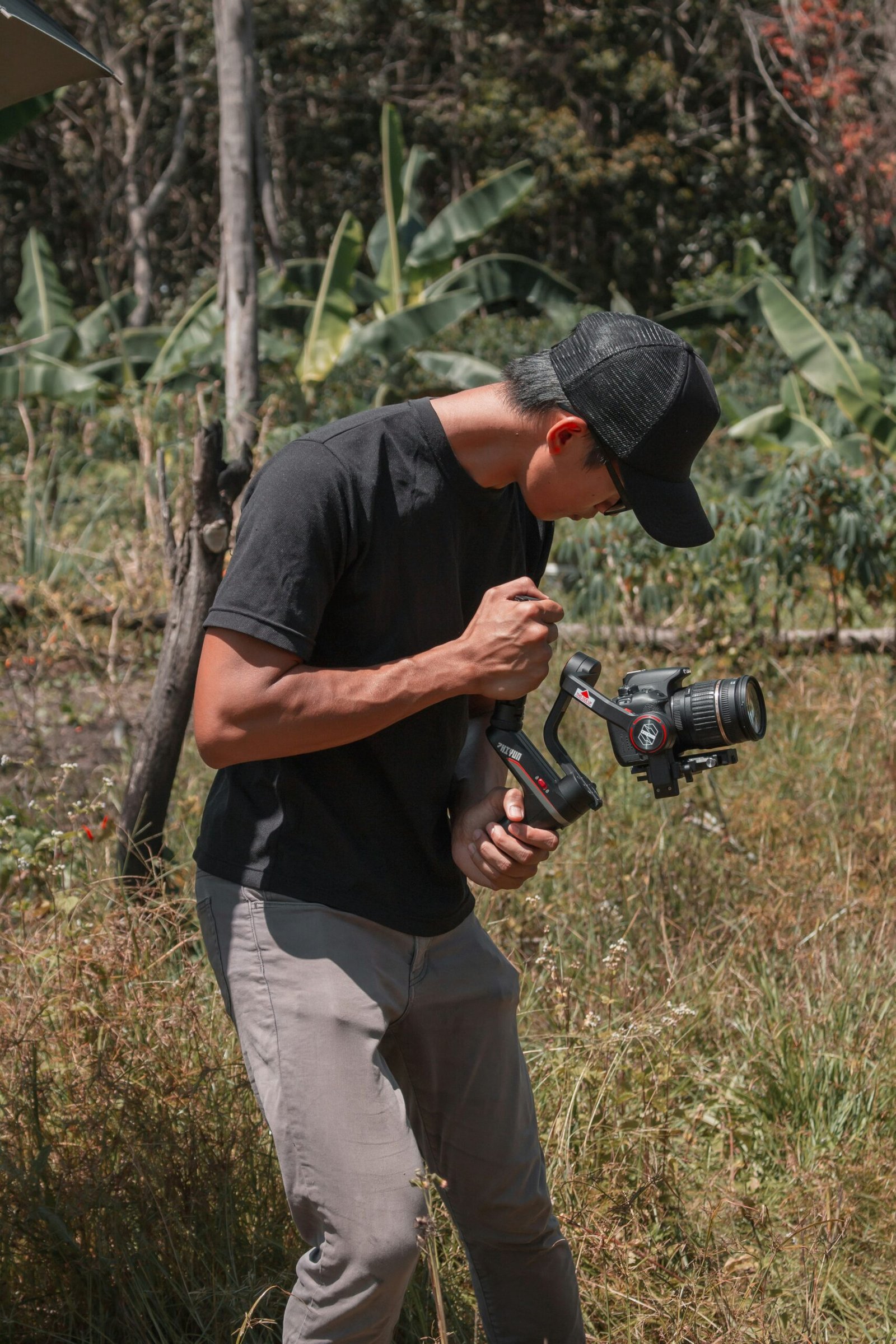
Introduction: The Importance of Sustainability in Photography
Sustainability in photography encompasses a holistic approach aimed at reducing the environmental impact of photographic practices by incorporating eco-friendly methodologies from gear selection to post-production processes. The movement towards sustainable photography is propelled by a burgeoning environmental awareness among photographers, paralleled by global shifts towards greener industries. This collective consciousness challenges photographers to reflect on their practices and opt for choices that contribute positively to the environment.
The significance of sustainable photography lies in its harmonious blend of creativity and responsibility. Today, more than ever, there is a pressing need for professionals to adopt practices that not only fulfill their creative intents but also align with environmental preservation. The growing number of photographers recognizing the importance of sustainability and integrating it into their workflow reflects a broader shift towards eco-consciousness within the industry.
From using recycled materials in photo printing to choosing energy-efficient equipment, the methods for reducing one’s carbon footprint are manifold. Industry stakeholders, including camera manufacturers and photography studios, are increasingly influencing this shift by offering eco-friendly products and services. Consequently, photographers are provided with more opportunities to make sustainable choices that reflect their dedication to protecting the environment.
The practices detailed in this blog post aim to shed light on how photographers can achieve a balance between their creative ambitions and ecological responsibility. Embracing sustainable photography is not merely a trend but a necessary evolution that mirrors our commitment to a healthier planet. By embedding eco-friendly principles into every aspect of the photographic journey, from inception to delivery, photographers can profoundly resonate with the spirit of sustainability while continuing to capture the world’s beauty.
Eco-Friendly Materials and Equipment
In the realm of sustainable photography, a significant shift is occurring towards the adoption of eco-friendly materials and equipment. This movement primarily involves the use of biodegradable materials in various photography products, including packaging and photography props. By opting for such materials, photographers are making a conscious choice to minimize their environmental footprint.
One of the foremost strategies includes the utilization of recycled paper and natural fibers. Recycled paper is increasingly being employed for printing photographs, brochures, and other promotional materials. The use of natural fibers, such as organic cotton and hemp, is prevalent in creating photography backdrops and prop fabrics. These alternatives not only reduce waste but also lessen the dependence on synthetic materials and the pollutants associated with their production.
The benefits of these eco-friendly choices extend beyond reducing waste. They minimize the carbon footprint of the photography industry and support a healthier planet. For instance, biodegradable packaging, derived from materials like cornstarch and recycled pulp, decomposes naturally, reducing landfill accumulation. Additionally, using props made from sustainable resources cuts down on the consumption of non-renewable resources and limits harmful environmental impacts.
Several brands and innovations are at the forefront of this eco-conscious trend. Companies like EcoEnclose and Green Packaging Inc. are leading the way with their sustainable packaging solutions. Meanwhile, manufacturers like Savage Universal are producing eco-friendly backdrops made from 100% recyclable paper, setting a new standard in the industry.
As the photography community becomes more aware of its environmental impact, the shift towards sustainable materials and equipment continues to gain momentum. Photographers who embrace these eco-friendly alternatives not only contribute to environmental conservation but also set an example for others to follow, fostering a more sustainable future for the industry.
Minimizing Waste on Shoots
The growing emphasis on sustainability has urged photographers to adopt eco-friendly practices, particularly when it comes to minimizing waste during shoots. These efforts not only contribute to environmental conservation but also showcase a photographer’s commitment to sustainable practices. Here, we delve into several strategies photographers are implementing to achieve zero-waste shoots effectively.
One of the earliest steps toward minimizing waste is the abandonment of printed materials. Instead of relying on paper checklists, digital checklists have become the norm. These digital alternatives are accessible on smartphones or tablets, thus eliminating the need for physical printouts that often end up discarded after a single use. Not only does this reduce paper waste, but it also ensures that essential information is always at hand and easily adjustable.
Additionally, the use of reusable items is a crucial aspect of sustainable photography. Photographers are increasingly opting for reusable props instead of single-use items. For instance, cloth backdrops replace paper ones, and sustainable props made from recycled materials are chosen over plastic options. Integrating such reusable items significantly reduces the amount of waste generated during each shoot.
Efficient battery management is another critical area where waste reduction can be realized. Traditional single-use batteries contribute heavily to environmental pollution. Transitioning to rechargeable batteries drastically cuts down on waste and ensures that power is available on-demand. Photographers should also dispose of old batteries responsibly by taking them to designated recycling centers.
Proper disposal and recycling of materials used during shoots further aid in waste reduction. Photographers can set up designated bins for recyclables and clearly label them. This simple yet effective step ensures that materials such as paper, plastic, and metal are appropriately segregated and recycled, thus preventing them from ending up in landfills.
To illustrate, a wedding photographer might switch to a fabric backdrop, use digital checklists for shot planning, utilize rechargeable batteries for camera equipment, and have recycling bins readily accessible to the crew. These small changes collectively lead to a considerable reduction in waste, promoting a more sustainable approach to photography.
Incorporating these practical tips not only supports environmental conservation but also aligns with the growing consumer preference for eco-friendly practices. By minimizing waste on shoots, photographers can make a significant impact in the shift toward sustainable photography.
Digital Transformation: Reducing Paper and Chemical Waste
The shift from traditional to digital photography heralds a significant environmental advantage, pushing the field towards more sustainable practices. Historically, the process of capturing, developing, and sharing images involved a series of practices that contributed considerably to environmental degradation. The use of photographic film required an array of chemicals for development, including developers, fixers, and stop baths, all of which necessitated careful disposal due to their toxic nature. Moreover, the conventional approach to photography was heavily reliant on paper—whether for printing proofs, creating final prints, or generating endless contact sheets.
The advent of digital photography has paved the way for substantial reductions in both paper and chemical waste. With digital cameras replacing film, the need for chemical processing has dramatically decreased, offering a cleaner and more eco-friendly alternative. This transition eliminates the harmful environmental footprint left by the disposal of photographic chemicals, which can infiltrate waterways and soil, posing a risk to ecosystems and human health.
Another critical aspect of digital transformation in photography is the concept of digital proofing. Instead of printing physical copies for review, photographers can now edit and proof their work on computer screens, tablets, or other digital interfaces. Digital proofing not only saves paper but also conserves ink and other printing resources, further reducing the environmental impact.
The rise of online image sharing amplifies the environmental benefits of digital photography. Platforms like social media, email, and cloud storage solutions allow photographers to distribute their work without resorting to physical prints. This method not only cuts down on the need for paper but also reduces the carbon footprint associated with mailing or transporting printed photographs.
In sum, the digital revolution in photography underscores a transition towards more sustainable practices. By drastically lowering the reliance on paper and chemical processing, this shift contributes to significant long-term environmental gains. As the technology continues to advance, it holds the promise of further reducing the ecological impact of capturing and sharing images, ensuring that the art of photography can thrive in harmony with the environment.
Energy-Efficient Equipment and Sustainable Production Methods
The shift towards sustainable photography is largely driven by the adoption of energy-efficient equipment and sustainable production methods. For instance, photographers are increasingly turning to LED lighting over traditional incandescent or fluorescent options. LEDs are known for their superior energy efficiency and longevity, consuming up to 80% less energy while offering a comparable, if not better, quality of light. This transition significantly reduces electricity usage, leading to substantial energy savings on photo shoots and in studio environments.
Another pivotal change is the use of battery-powered devices. Modern camera equipment, drones, and other photographic tools are equipped with rechargeable batteries that boast extended life spans and higher efficiency. These batteries not only minimize waste associated with disposable batteries but also contribute to a reduced carbon footprint. The integration of such energy-efficient equipment is proving vital for photographers aiming to lessen their environmental impact.
Moreover, implementing sustainable production methods is gaining traction in the industry. Renewable energy sources, such as solar or wind power, are being utilized to power photo studios and outdoor shoots. Harnessing these clean energy options ensures that the environmental impact of photography projects is minimized. By setting up solar panels or contracting renewable energy providers, photographers can ensure that their creative processes are both eco-friendly and reliable.
These energy-efficient practices cumulatively contribute to a lower carbon footprint. For instance, a switch to LED lighting can save thousands of kilowatt hours (kWh) over time, while the usage of rechargeable batteries cuts down on hazardous waste disposal. The emphasis on renewable energy sources further supports a sustainable approach by decreasing dependency on fossil fuels. Together, these efforts highlight the importance and practicality of adopting eco-friendly practices in the field of photography, setting a benchmark for other creative industries to follow.
The Rise of Green Photography Studios
As the world becomes increasingly conscious of environmental sustainability, the concept of green photography studios has gained significant traction. These studios prioritize eco-friendly practices by utilizing renewable energy sources and sustainable materials, setting a precedent for an environmentally responsible approach in the photography industry. By adopting such measures, green studios not only reduce their carbon footprint but also promote a broader culture of sustainability.
For instance, SUSTAINABLY FOCUSED STUDIOS in New York have effectively integrated renewable energy solutions such as solar panels and wind turbines to meet their electricity needs. In addition to harnessing clean energy, these studios are outfitted with recycled or upcycled fixtures and furnishings, further minimizing waste and resource consumption. Another example is ECOMODEL STUDIOS in Los Angeles, which implements strict waste management protocols including composting organic waste and recycling non-biodegradable materials, thus ensuring that their operations are as environmentally friendly as possible.
The benefits of green photography studios are manifold. On the environmental front, the adoption of renewable energy significantly mitigates greenhouse gas emissions, a critical component in combating climate change. Furthermore, the use of sustainable materials and waste reduction practices diminishes the pollution and depletion of natural resources, leading to a cleaner and healthier planet.
For photographers, these green studios offer several advantages as well. Operating in an eco-friendly environment enhances the social responsibility image of photographers, appealing to clients who prioritize sustainability. Moreover, the use of natural light and eco-friendly materials often results in a unique and inspiring creative space that can stimulate artistic expression. This forward-thinking model aligns with the values of an ever-increasing number of consumers and professionals looking to contribute positively to the environment.
Green photography studios represent a vital shift towards sustainability in the creative industry. By leveraging renewable energy and sustainable resources, these studios not only protect the environment but also elevate the industry’s standards and appeal, fostering a new era of environmentally responsible photography.
Ethical Standards and Sustainable Photography Practices
Sustainable photography goes beyond addressing environmental concerns; it incorporates robust ethical standards. Central to this approach is the ethical sourcing of materials, which ensures that the components used in photography—from cameras and lenses to printed materials—are obtained responsibly. This involves selecting suppliers who adhere to environmental and social responsibility criteria, thereby minimizing harm and advocating for fair labor practices.
Fair labor practices form another cornerstone of sustainable photography. It is crucial for photographers to partner with brands and suppliers that adhere to fair trade principles, ensuring that workers involved in the production chain are compensated fairly and work under adequate conditions. This ethical consideration extends to all aspects of the business model, from contract negotiations with clients to interactions with support staff and collaborators.
Moreover, creating an environmentally-conscious business model helps in promoting long-term sustainability in photography. Photographers can adopt green practices by integrating renewable energy sources, searching for eco-friendly alternatives to traditional photography materials, and reducing waste through digital means whenever possible. Striving for a carbon-neutral business operation not only minimizes the photographer’s ecological footprint but also sets a positive industry standard.
There are several photographers and brands that exemplify adherence to these ethical standards. For instance, renowned photographer Chris Jordan is known not just for his impactful photographs but also for his commitment to environmental advocacy, using his art to raise awareness about ecological issues. Similarly, companies like EcoEnclose specialize in providing eco-friendly packaging for photographers, promoting materials that are both sustainable and ethically sourced.
Overall, sustainable photography encompasses a holistically ethical approach. By prioritizing ethical standards, such as responsible material sourcing and fair labor practices, photographers can create business models that are environmentally and socially responsible. This paradigm fosters a more sustainable future for the industry and promotes ethical practices that benefit both people and the planet.
Documenting Environmental Issues: Photography as a Tool for Social Change
Photography has emerged as a powerful instrument for driving social change, especially in the realm of environmental issues. Through visual storytelling, photographers are able to capture the stark realities of climate change, pollution, and habitat destruction, presenting these crises in a manner that is both compelling and urgent. The visual medium transcends language barriers, making it a universally accessible method of raising awareness and prompting action.
One of the core strengths of photography lies in its ability to document the immediate and long-term effects of environmental degradation. Images of melting glaciers, deforestation, or contaminated water sources serve as poignant reminders of the consequences of human actions on the planet. These photographs do more than merely inform; they evoke emotional responses that can lead to behavioral changes and influence public opinion.
Several notable works and projects exemplify how photography can galvanize ecological conservation efforts. For instance, the renowned work of Sebastião Salgado has brought global attention to the plight of natural ecosystems and indigenous communities through his “Genesis” project. Likewise, the breathtaking images captured by Chris Jordan in his “Midway” series, which highlights the impact of plastic pollution on albatross populations, have spurred conversations on the critical need for waste reduction.
Furthermore, multimedia platforms and social media have amplified the reach of environmental photography. Campaigns such as National Geographic’s “Planet or Plastic?” utilize striking visuals to underline the urgency of addressing single-use plastic pollution. By leveraging these platforms, photographers can engage a broader audience, encouraging collective action and policy change.
In conclusion, sustainable photography not only involves eco-friendly practices behind the lens but also focuses on using the craft as a catalyst for environmental advocacy. By documenting environmental issues, photographers play an essential role in educating and mobilizing society toward a more sustainable and conscientious future.
For more insights into sustainable photography, consider these resources:
- Sustainable Photography: Practices and Principles – A guide to eco-friendly practices in photography, covering everything from sustainable gear to ethical considerations.
- How to Be an Eco-Friendly Photographer – Photodoto offers practical tips for photographers looking to reduce their environmental impact.
- Sustainability in Photography: A New Ethical Approach – The Photography Blog discusses the importance of sustainability and how photographers can adopt green practices.




